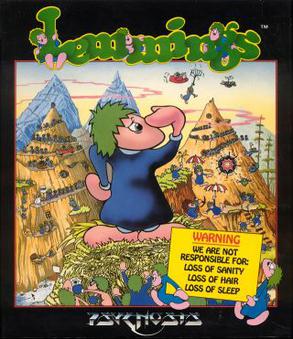
Lemmings is a puzzle–strategy video game originally developed by DMA Design and published by Psygnosis for the Amiga in 1991 and later ported for numerous other platforms. The game was programmed by Russell Kay, Mike Dailly and David Jones, and was inspired by a simple animation that Dailly created while experimenting with Deluxe Paint.

Walker is a horizontally scrolling shooter video game developed by DMA Design and published by Psygnosis for the Amiga in February 1993. The player controls a bipedal mech and is tasked with killing advancing enemies in stages set in multiple time periods. Development of the game began after the release of Blood Money, but was scrapped in 1990 because the game was not coming together. By the end of the year, development had recommenced with a redesign, inspired by sprites originally intended for Blood Money. Ian Dunlop and Neill Glancy designed the game, and Raymond Usher wrote its soundtrack. The game was released to positive reviews with praise directed at the game's graphics and sound, but reviewers were critical towards the repetitiveness of the gameplay. Amiga Power ranked it among their top 100 Amiga games of 1993.

Oh No! More Lemmings is an expansion pack for the puzzle video game Lemmings by DMA Design. It contains 100 single-player levels and six music tracks. The Amiga version also includes 10 two-player levels. The game requires either the install disk from the previous Lemmings, or, in a standalone version, the game manual, for use as a copy protector. The new levels are separated into five difficulty categories, each with 20 levels.
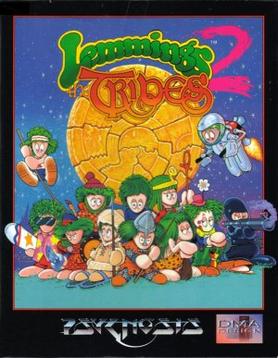
Lemmings 2: The Tribes is a 1993 puzzle strategy video game developed by DMA Design and published by Psygnosis, and is the sequel to the 1991 video game Lemmings. Similar to the original title, the game sees the player guiding various tribes of anthropomorphised lemmings through a number of levels, using various skills to help them reach the exit. Expanding on the mechanics of the original game, Lemmings 2 featured a more open-ended series of levels with different 'tribes', contained an overarching narrative, expanded the number of skills, simplified the requirements for clearing levels, and included a practice mode for players to test out new gameplay mechanics. Development of Lemmings 2 was more intensive, with Psygnosis having greater involvement in attempt to recreate the success of the original game. A focus on the production of the game was cross-development of a large number of ports, with the game released to consoles including the Mega Drive, Super NES and Game Boy. Lemmings 2 was a commercial success and received positive reviews from critics, with praise directed towards its additional gameplay mechanics and greater variety of levels and abilities.

Ork is a video game made for the Amiga and Atari ST personal computers. It was developed by WJS Design and published by Psygnosis in 1991.

The Sentinel, released in the United States as The Sentry, is a puzzle video game created by Geoff Crammond, published by Firebird in 1986 for the BBC Micro and converted to the Commodore 64, Amstrad CPC, ZX Spectrum, Atari ST, Amiga and IBM PC compatibles. The Sentinel was among the first games to use solid-filled 3D graphics on home computers. It won numerous awards upon release and has since appeared on several "best video games of all time" lists.
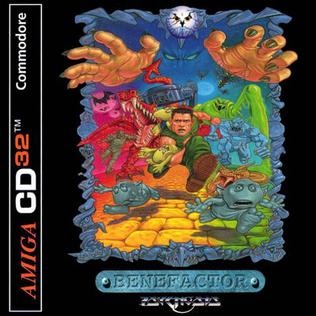
Benefactor is a video game for the Amiga developed by the Swedish team Digital Illusions CE (DICE) and published in 1994 by Psygnosis.

Star Goose is a vertically scrolling shooter that was published for the Amiga, Atari ST, and MS-DOS by Logotron in 1988. The player controls Scouser-Gitt, who pilots the eponymous Star Goose, a vessel that has been commissioned to scour the planet Nom and collect 48 crystals. Players must collect all six crystals in each of the game's eight levels to advance, while at the same time avoiding or destroying enemies and maintaining their shield, ammunition, and fuel levels. The game's surfaces are contoured, which affects the way that bullets travel, and contain tunnels that switch modes to a three-dimensional perspective where the player can replenish their resources.

Xenon 2: Megablast is a 1989 shoot 'em up video game developed by The Bitmap Brothers and published by Image Works for the Amiga and Atari ST. It was later converted to the Master System, PC-98, X68000, Mega Drive, Commodore CDTV, Game Boy, Acorn Archimedes and Atari Jaguar platforms. The game is a sequel to Xenon and takes place a millennium after the previous title. The goal of the game is to destroy a series of bombs planted throughout history by the Xenites, the vengeful antagonists of the first game.
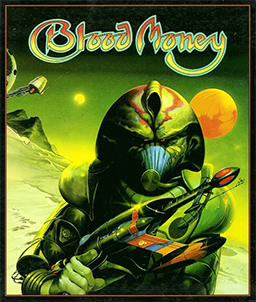
Blood Money is a side-scrolling shooter video game developed by DMA Design and published by Psygnosis in 1989 for the Amiga, Atari ST, and MS-DOS. A Commodore 64 version followed in 1990. The game is set in four different locations on a planet, where the player must fight off enemies and bosses.

Rick Dangerous 2 is a platform game developed by Core Design for the Amiga, Atari ST, Amstrad CPC, ZX Spectrum, Commodore 64, and MS-DOS. It was released in 1990 and published by Micro Style as a sequel to Rick Dangerous.

Psygnosis Limited was a British video game developer and publisher headquartered at Wavertree Technology Park in Liverpool. Founded in 1984 by Ian Hetherington, Jonathan Ellis, and David Lawson, the company initially became known for well-received games on the Atari ST and Amiga. In 1993, it became a wholly owned subsidiary of Sony Computer Entertainment (SCE) and began developing games for the original PlayStation. It later became a part of SCE Worldwide Studios. The company was the oldest and second largest development house within SCE's European stable of developers, and became best known for franchises such as Lemmings, Wipeout, Formula One, and Colony Wars.

Wings of Fury is a scrolling shooter, with some combat flight simulator elements, originally written for the Apple II by Steve Waldo and released in 1987 by Broderbund. The player assumes the role of a pilot of an American F6F Hellcat plane aboard the USS Wasp in the Pacific during World War II. It was also released in 1989 for the X68000 and in 1990 for Amstrad CPC, Commodore 64, Amiga, and MS-DOS compatible operating systems. A Game Boy Color version was published in 1999.

RoadBlasters is a combat racing video game released in arcades by Atari Games in 1987. In RoadBlasters, the player must navigate an armed sports car through 50 different rally races, getting to the finish line before running out of fuel.

Tim Wright, known professionally as Cold Storage, is a Welsh video game music composer most known for his work in video game soundtracks such as Shadow of the Beast II, Agony, Lemmings, Wipeout and Colony Wars.
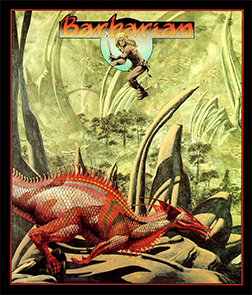
Barbarian is a 1987 platform game by Psygnosis. It was first developed for the Atari ST, and was ported to the Amiga, Commodore 64, MS-DOS, MSX, Amstrad CPC, and ZX Spectrum. The Amiga port was released in 1987; the others were released in 1988. The cover artwork is by fantasy artist Roger Dean.
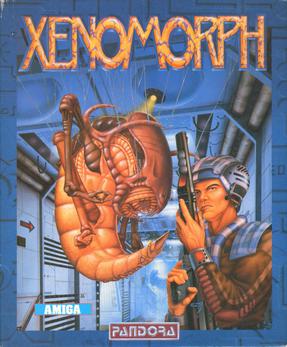
Xenomorph is a 1990 video game developed and published by Pandora for the Amiga and the Atari ST, and later ported for the Commodore 64 and DOS.
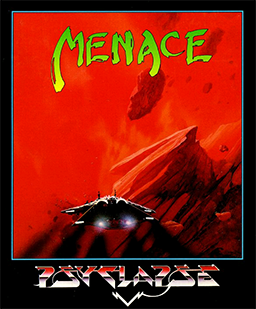
Menace is a horizontally scrolling shooter developed by DMA Design and published by Psygnosis. It was originally released for the Amiga in 1988, and was ported for the Atari ST, Commodore 64, and MS-DOS in 1989. The game is set on the planet of Draconia, where players are tasked with destroying the planet's defence mechanisms in order to kill the harmful creatures.
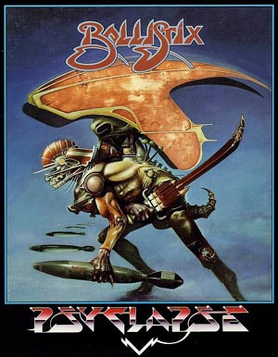
Ballistix is a video game created by Martin Edmondson for the Amiga and Atari ST and published by Psyclapse in 1989. It was also converted to a number of other home computers in the same year and the PC Engine/TurboGrafx-16 console in 1991. It is a fictional futuristic sport involving directing a puck to a goal by shooting small balls at it.
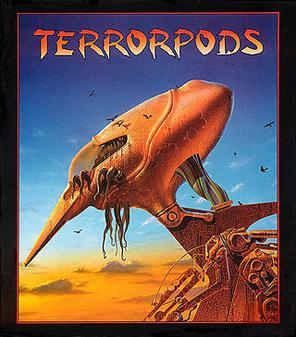
Terrorpods is a 1987 shooting game with simple business simulation by Psygnosis. Originally developed for the Amiga and Atari ST, it was later ported to the Commodore 64, ZX Spectrum, Amstrad CPC and MSX.




















